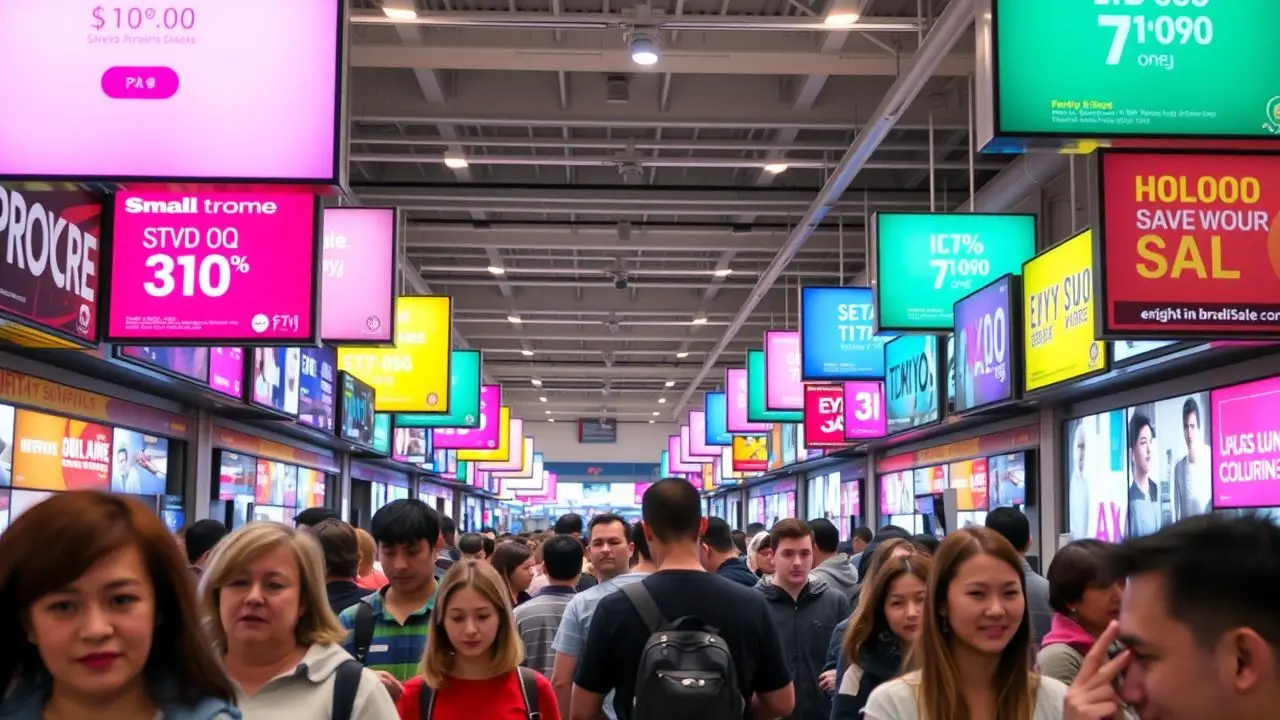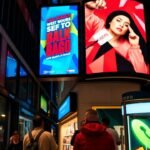Keeping customers happy in retail spaces is a big challenge. A fact to note: digital signage plays a key role in this. This blog will explain how digital signs make shopping better by grabbing attention and delivering messages that matter.
Keep reading to learn more!
Key Takeaways
- Digital signage attracts more customers with bright screens and colorful images. This makes stores look more inviting.
- Screens show up-to-date sales, products, and events. Customers find out about deals quickly, which helps them decide what to buy.
- Touchscreens let shoppers look up information or find things in the store by themselves. This makes shopping fun and easy.
- Stores that use digital signs can change their ads fast without needing new paper signs. This saves time and keeps messages fresh.
- Digital signage helps people feel less bored when they have to wait. They watch videos or learn about products on screens instead of just waiting.
Table of Contents
ToggleThe Evolution of Digital Signage in Retail
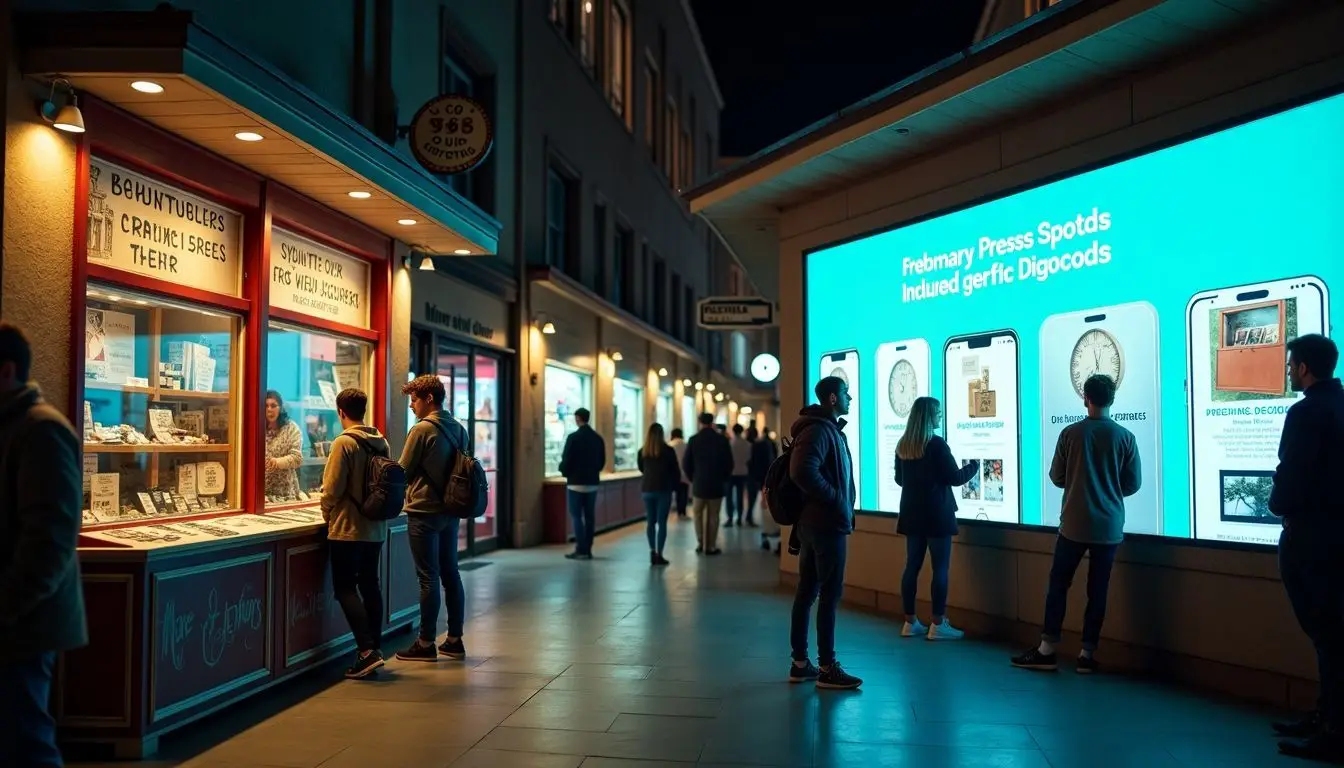
Digital signage has changed how stores communicate with customers. It started with simple signs and now uses high-tech displays to catch attention and share messages.
From Traditional Signage to Digital Displays
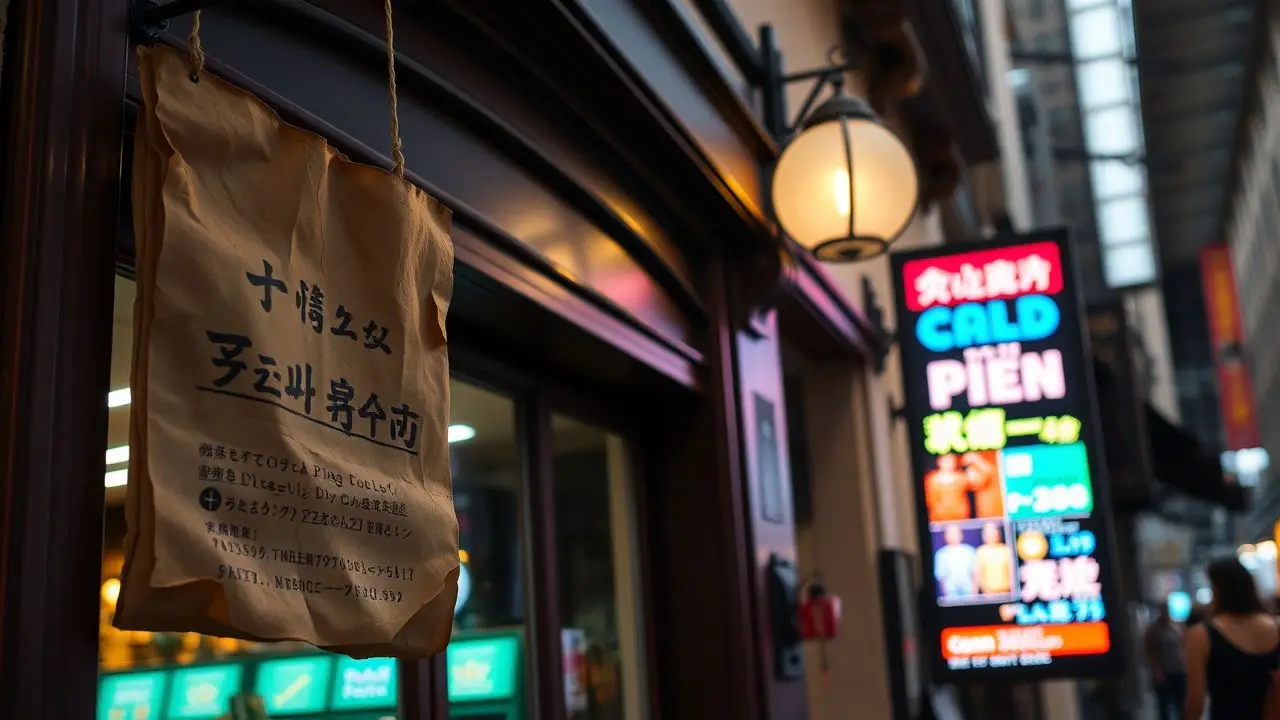
Traditional signage has been common in retail for many years. Stores used static signs made of paper or plastic. These signs often faded and became hard to read over time. With the rise of digital displays, stores now have better options.
High-resolution screens can show bright images and dynamic messaging. This change attracts more customer attention.
Digital displays allow retailers to update information quickly and easily. They use real-time content to promote sales, new products, or events. This flexibility helps improve the retail experience for shoppers.
Interactive displays engage customers directly, making their visit more enjoyable and memorable.
Impact of Technology on Retail Signage

Technology changes how stores use signage. Digital displays are better than old signs. They can show bright colors and moving images. High-resolution screens grab attention easily.
Stores now use digital signage to engage customers in new ways.
Real-time content is key for improving customer experience. Store owners can update messages quickly based on current trends or sales. This immediate change helps shoppers make quicker purchasing decisions.
For example, a store might highlight a special deal during busy hours to draw more customers in.
Types of Digital Signage in Retail
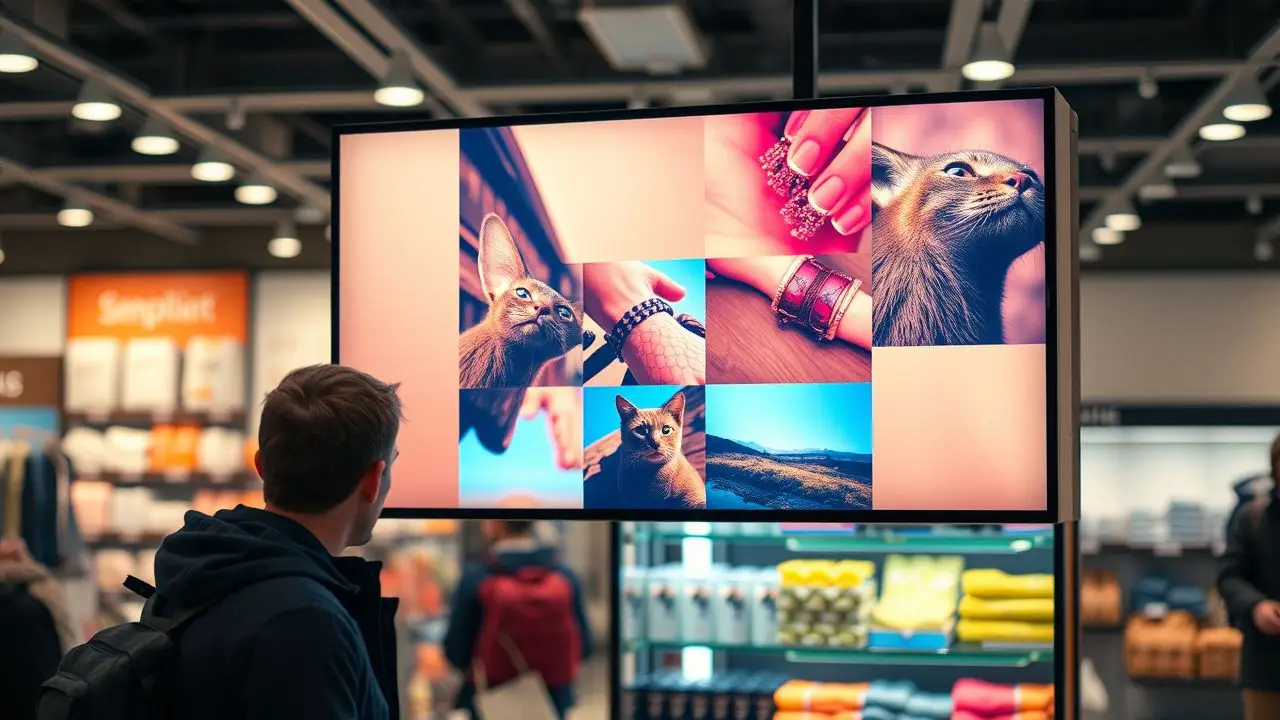
Digital signage has many forms in retail. Each type serves a unique purpose to enhance customer engagement.
- High-Resolution Screens offer clear images and videos. They grab attention from far away. Customers stop to look at vibrant displays.
- Point of Sale Displays show promotions and product details. These signs are near checkout areas. They help boost sales by informing customers right before they buy.
- Interactive Kiosks let shoppers explore products actively. Customers can touch screens for information, deals, or maps of the store. This creates a fun shopping experience.
- Digital Menu Boards are common in restaurants and cafes. They display food options and prices clearly. Menus can change easily to show specials or updates.
- Video Walls create stunning visuals using multiple screens together. This type of signage captures attention with dynamic content and colors.
- Wayfinding Displays help customers navigate large stores or malls. These signs guide shoppers to different areas like restrooms or specific departments.
- Event Promotion Screens share news about upcoming events or sales in real-time. Customers can see what’s happening right away, increasing interest and foot traffic.
- Social Media Walls display user-generated content from platforms like Instagram or Twitter. This showcases customer engagement with the brand and builds community spirit.
- Digital Signage Solutions provide flexible advertising options for brands within the store environment. Retailers can update their marketing strategy quickly without printing new signs.
10.Digital Shelf Tags automatically update prices and product info on shelves using real-time content management systems that improve operational efficiency in stores.
Each type of digital signage plays a key role in transforming the instore experience for customers while boosting brand promotion in effective ways.
Benefits of Digital Signage for Retail Customer Experience
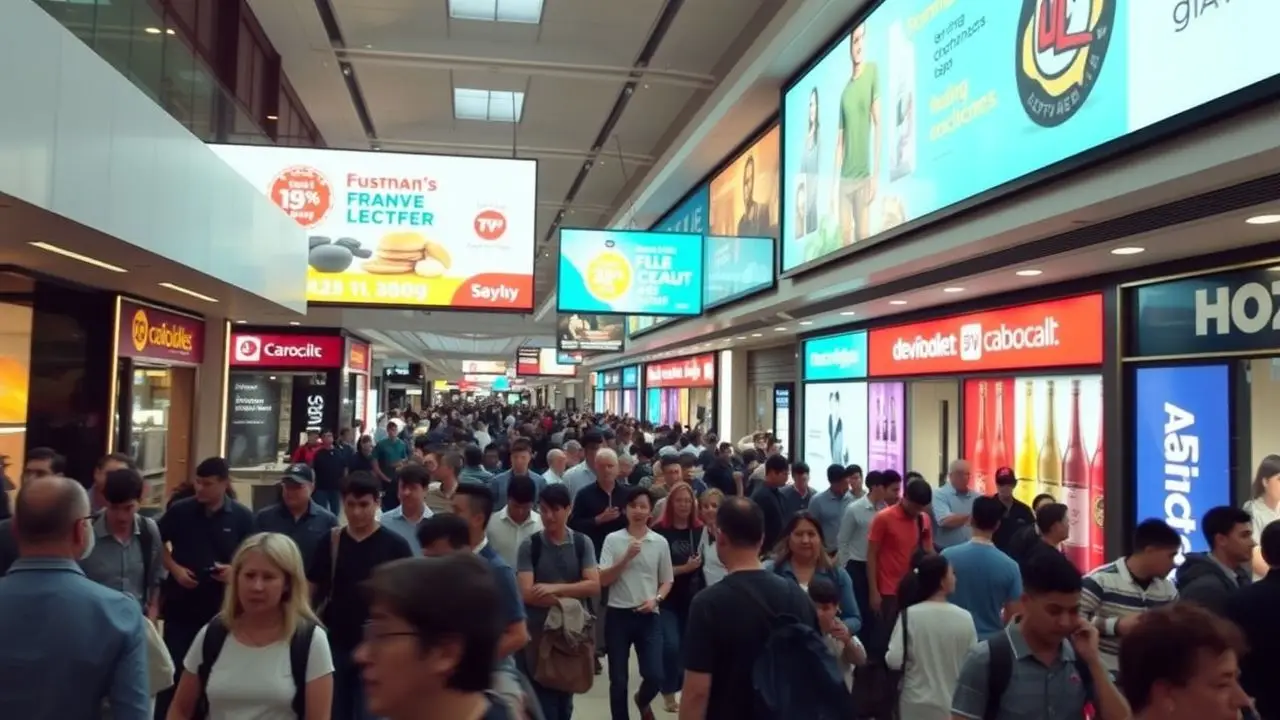
Digital signage makes stores more attractive and draws in customers. It provides quick updates and personalized content, making shopping easier and more enjoyable.
Enhancing Visual Appeal and Attracting Attention
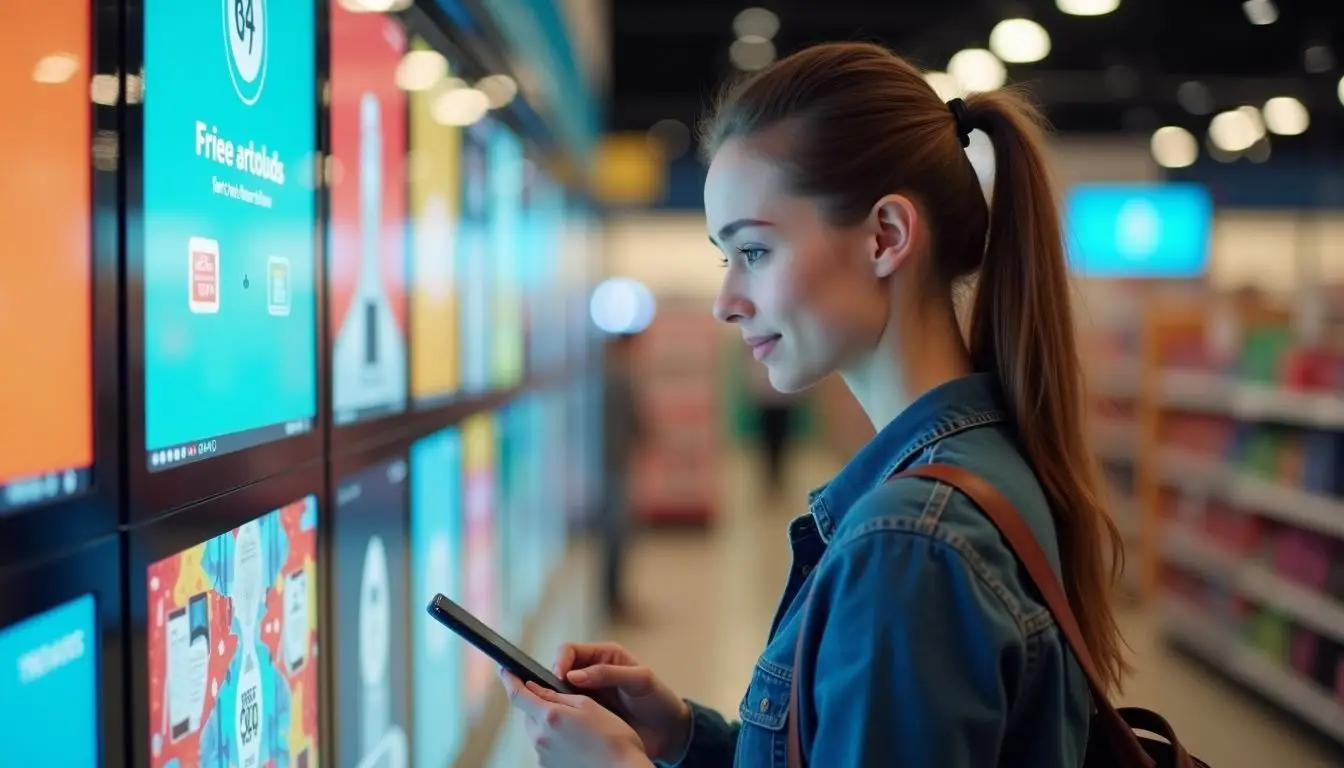
Bright screens and colorful images grab attention. High-resolution screens show sharp graphics that make products look good. Retail technology uses these displays to stand out in busy stores.
This visual communication draws customers in and makes them want to explore more.
Digital signage also helps create a lively atmosphere. Animated content keeps people interested as they walk by. Stores can showcase promotions or new items quickly using real-time content.
These features boost customer engagement and improve the shopping experience in retail spaces.
Providing Real-Time Information
Digital signage offers real-time information that improves the retail experience. Customers can see live updates on promotions, new products, and store events. This keeps shoppers informed and engaged.
High-resolution screens display vibrant content that catches their eyes.
Using digital displays allows retailers to share important details quickly. For example, a customer might learn about a flash sale while waiting in line. Real-time content helps guide consumer behavior right when it matters most.
Retailers can easily adjust messages based on what customers want or need at any moment.
Personalization and Interactivity
Personalization and interactivity are key features of digital signage in retail. Shops can show content that fits each customer’s needs. High-resolution screens make ads more appealing.
Customers see products that interest them. Interactive displays allow customers to engage with the content.
Shoppers can touch screens for more information or special offers. This makes their shopping experience fun and unique. Real-time content keeps things fresh, so customers return often.
The use of advertising solutions lets stores connect better with their audience too.
Enhancing Communication with Customers
Digital signage improves communication with customers in retail spaces. High-resolution screens display clear and engaging messages. Stores can share important information quickly.
Customers see new products, promotions, or events instantly. This real-time content keeps shoppers informed and engaged.
Displays also allow for two-way interaction. Shoppers can respond to polls or surveys through touch screens. Retailers gather feedback directly from their audience. This creates a better shopping experience and builds loyalty among customers.
Reducing Perceived Wait Time
Long waits can make customers feel frustrated. Digital signage helps change that feeling. High-resolution screens show engaging content while people wait. This keeps their minds busy and makes time pass faster.
Real-time content can deliver promotions or highlight products during the wait. Customers stay entertained and informed, which improves their experience in retail spaces. They are less aware of how long they have been waiting thanks to digital signs.
Successful Implementation of Digital Signage in Retail
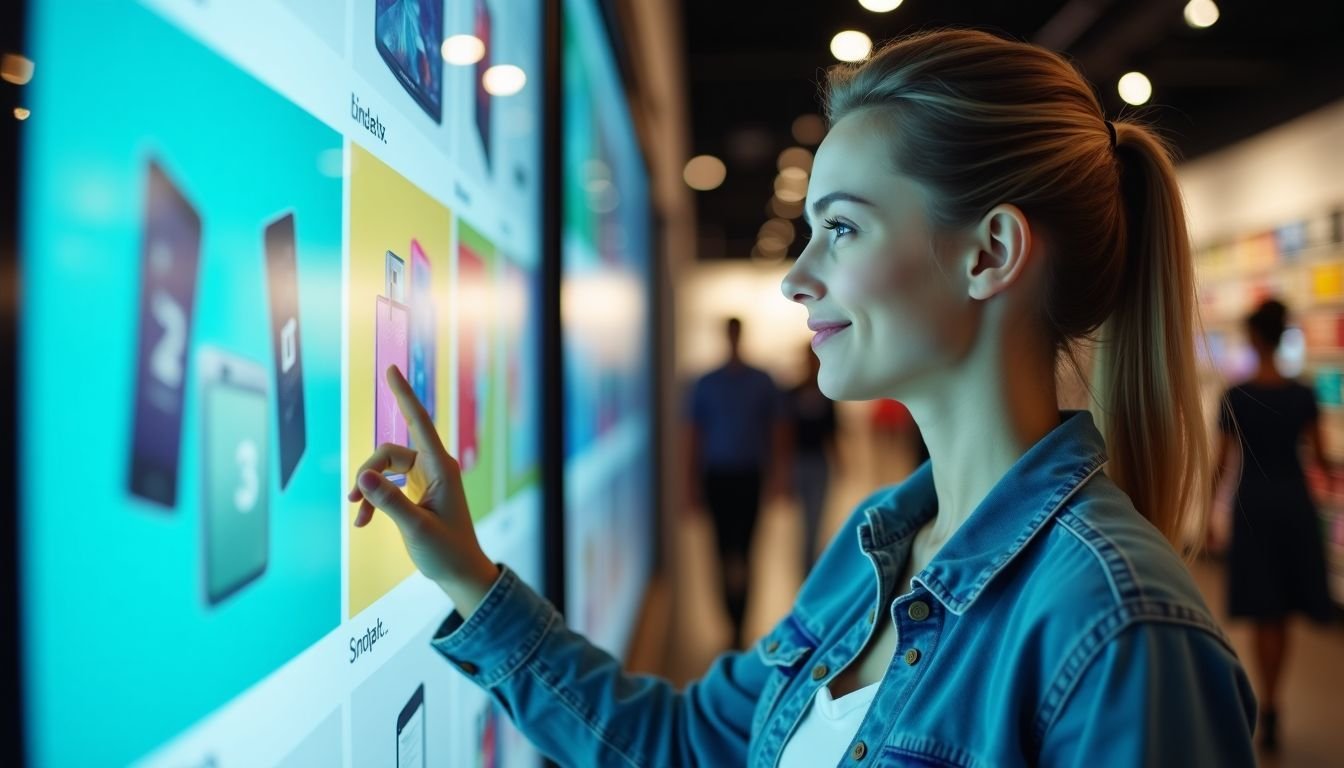
Many stores use digital signage to improve sales and customer engagement. They create exciting displays that catch people’s eyes and keep them informed.
Real-World Examples of Successful Implementation
Many stores have found success using digital signage. Real-world examples show the benefits for customers and businesses.
- A large grocery chain used high-resolution screens to display fresh product offers. Customers could see exciting deals on fruits and vegetables in real time. This tactic increased sales by 20% during promotional periods.
- An upscale fashion retailer installed digital displays in its windows. The vibrant visuals attracted more foot traffic into the store. Shoppers became curious about new arrivals and limited-time offers displayed on these screens.
- A popular coffee shop chains introduced interactive menus on touch screens. Customers could customize their drinks easily and view real-time content about ingredients and allergens. This change improved customer satisfaction ratings significantly.
- A sports equipment store utilized digital signage to share live updates on local sporting events. The screens featured scores, highlights, and upcoming games, creating excitement among visitors. Many shoppers stayed longer in the store due to this engaging content.
- A major electronics retailer integrated social media feeds into their digital signs. Shoppers saw posts from happy customers using their products.This connection made the shopping experience feel more personal and trustworthy.
- A home improvement store used large displays for DIY project ideas and tips.The high-resolution screens showcased different ways to use their products effectively.Customers loved having access to helpful guides at a glance, leading to more sales in related items.
- An online clothing brand set up digital kiosks in physical pop-up shops.The kiosks allowed shoppers to browse the entire online catalog while shopping in-store.People appreciated getting access to all sizes and colors available without crowded racks.
- A beauty supply store implemented quick tutorials through video displays.Customers learned how to apply products properly right in front of them.This educational approach led to higher product purchases as people felt confident using what they bought.
Each example shows how brands can enhance customer experience through digital signage efforts.Customer engagement grows when companies focus on exciting visuals and real-time information in retail spaces.
CrownTV: A Comprehensive Solution for Content Management
CrownTV offers an easy way to manage content for digital signage. It helps retail spaces show high-resolution screens with real-time content. Users can change messages instantly. This keeps customers engaged and informed.
Stores that use CrownTV see better results. They attract more attention and improve the customer experience. Many businesses have shared positive feedback about their success with this tool.
With CrownTV, retailers can create a dynamic display that enhances engagement and drives sales.
Future of Digital Signage and its Potential in Retail
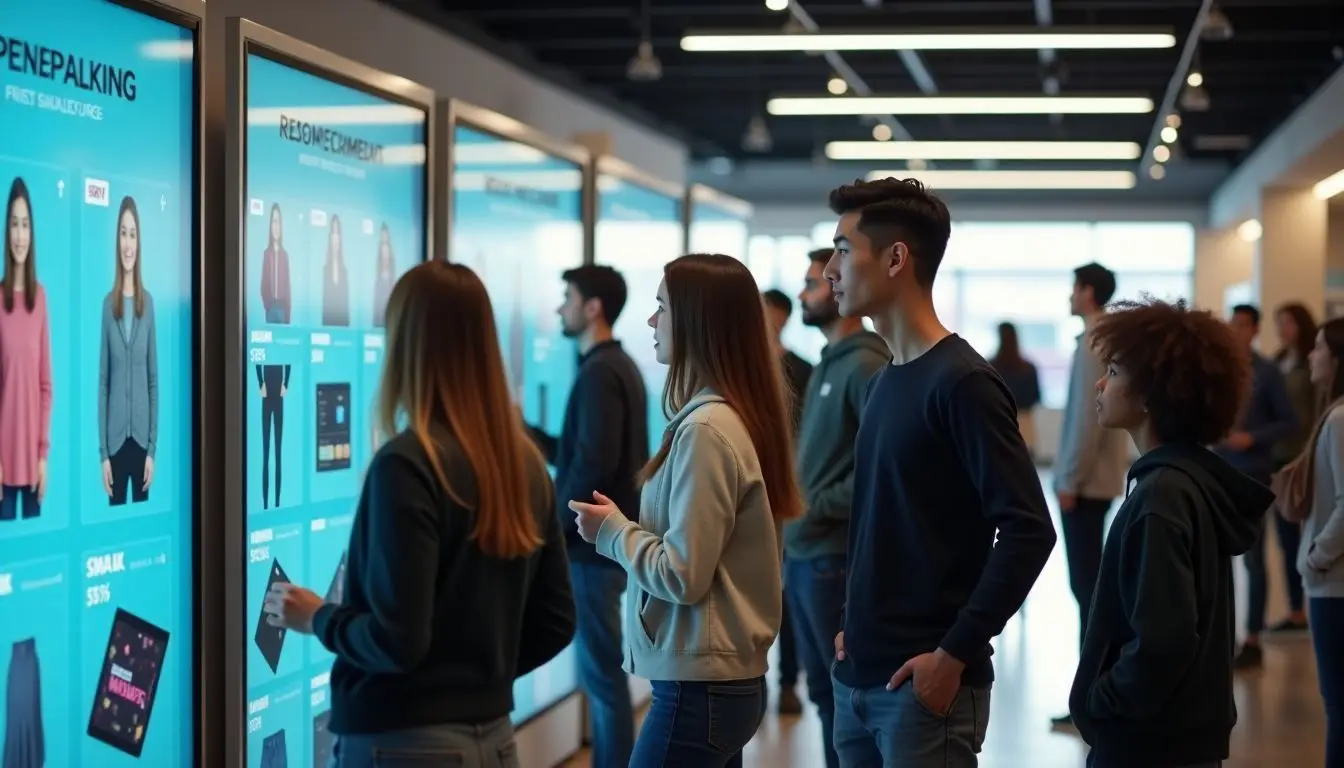
Digital signage is set to grow in retail. New technology will help stores connect with customers better and collect useful data.
Emerging Technologies
Emerging technologies are changing retail spaces. High-resolution screens attract customers with bright and clear images. Many stores now use touchscreens. These allow shoppers to interact and find what they need quickly.
Real-time content keeps information fresh and up-to-date.
Augmented reality (AR) is also gaining popularity. AR lets customers see products in a new way, helping them imagine how items will look in their lives. This adds fun to shopping and improves the overall experience.
Stores that embrace these innovations enhance customer engagement and satisfaction significantly.
Increased Integration with Social Media and Mobile Channels
Digital signage can connect with social media and mobile apps. Retailers can share real-time content easily. Customers see up-to-date promotions and events on high-resolution screens.
They can even interact by posting photos or comments online that show up on displays in the store.
This integration helps create a lively shopping experience. Shoppers feel more involved when they see their posts featured. Brands gain valuable feedback about what customers like or want to see next.
Engaging customers this way makes them happier and encourages them to return for more experiences.
Facilitating Data Collection and Analytics
Data collection and analytics help retailers understand their customers better. This information can show what products attract attention and which displays draw more foot traffic.
High-resolution screens can display real-time content to engage shoppers as they browse.
Retailers can also see how long customers spend in front of certain signs or products. By tracking this data, businesses make smarter decisions about signage placement and design. Successful stores use this system to improve the shopping experience for everyone who walks through their doors.
First-hand experience from users shows that effective digital signage leads to happier customers and higher sales.
FAQs
1. What is digital signage in retail spaces?
Digital signage in retail spaces refers to high-resolution screens that display real-time content to customers.
2. How does digital signage enhance customer experience?
Digital signage enhances the customer experience by providing up-to-date information and visually appealing displays on high-resolution screens.
3. Can digital signage in retail spaces show real-time content?
Yes, one of the main benefits of digital signage is its ability to show real-time content, keeping customers informed and engaged.
4. Why use high-resolution screens for digital signage?
High-resolution screens make the displayed content more attractive and clear, which can improve the overall customer experience in retail spaces.
